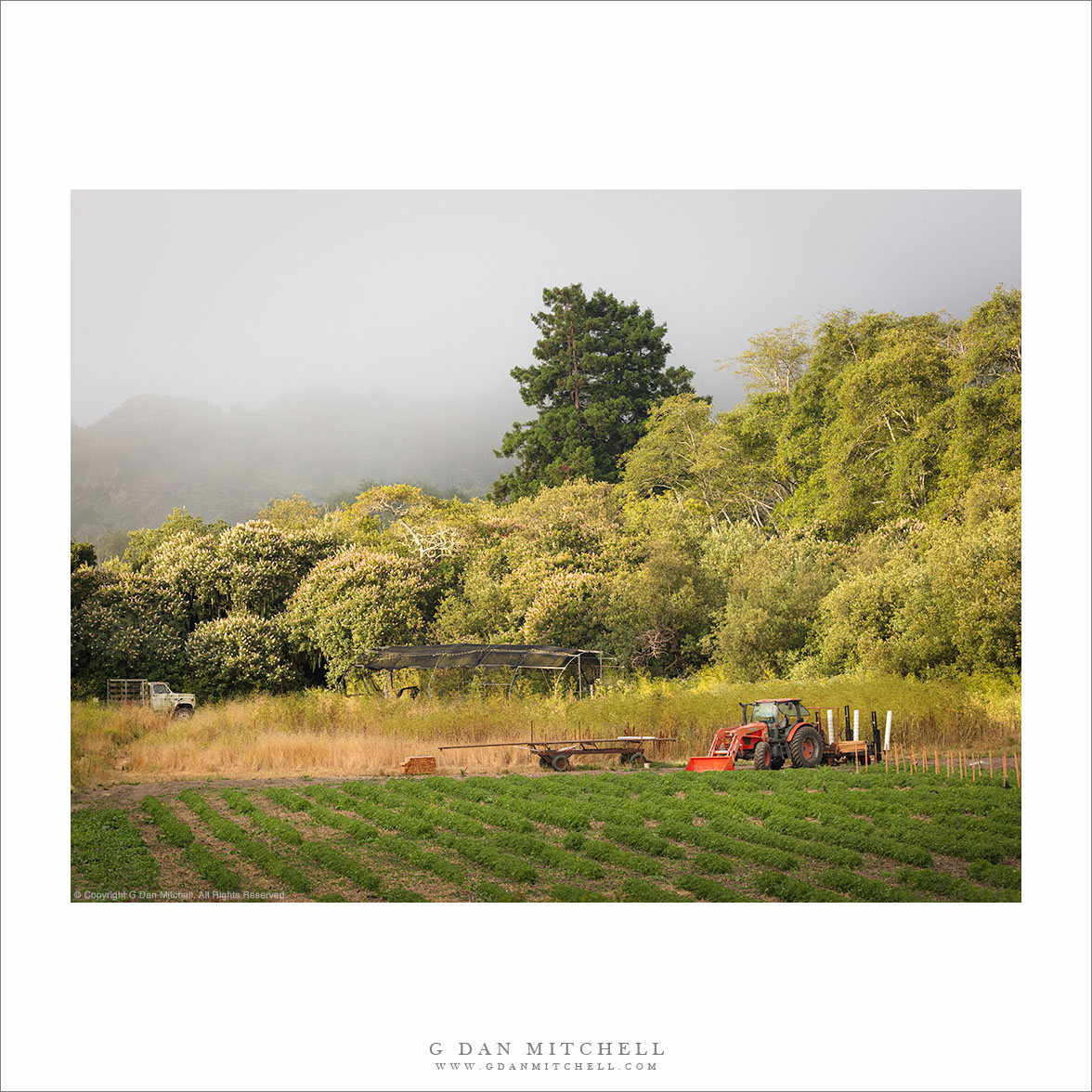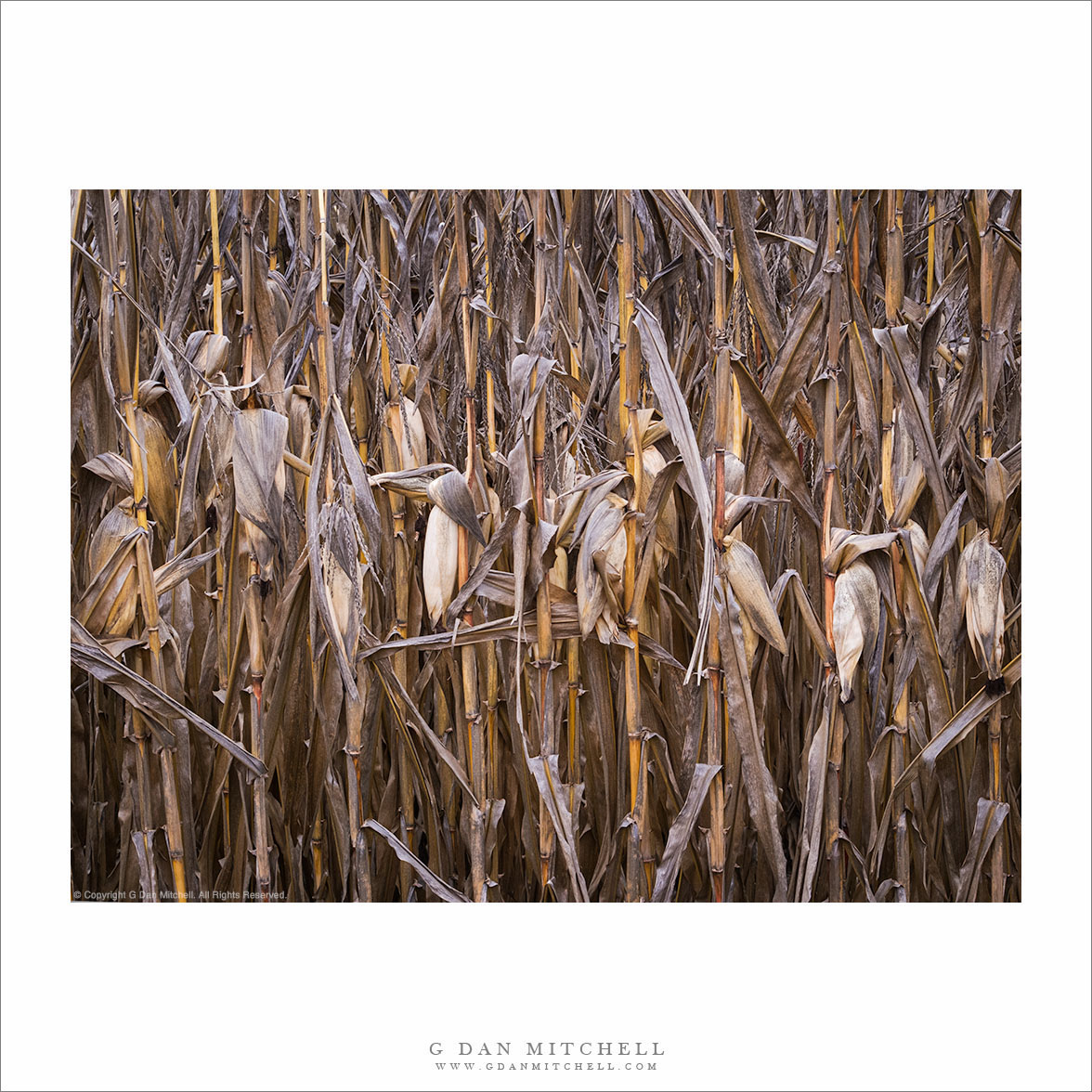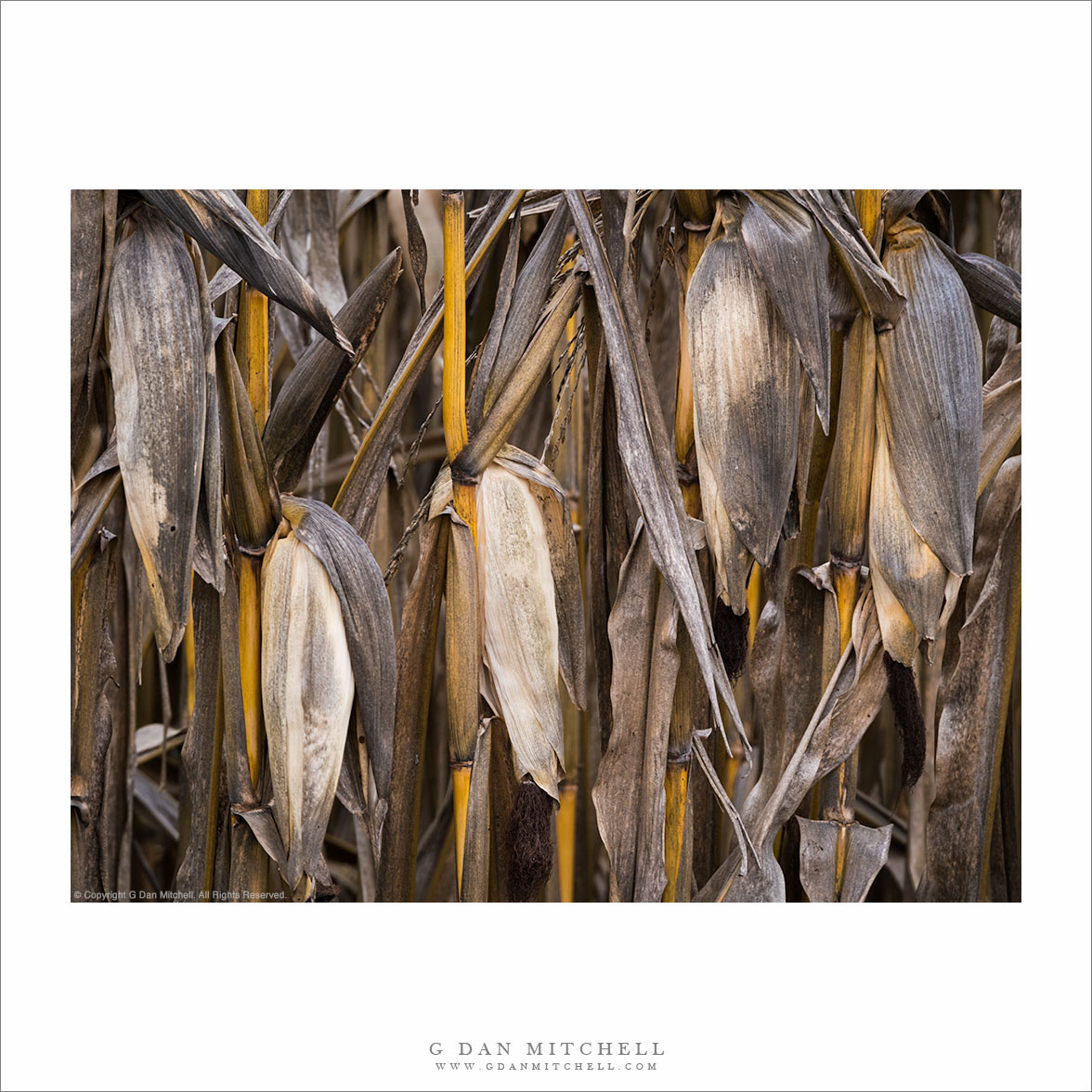
On this summer morning I headed over the mountains for the coast, planning to drive north from Santa Cruz and photograph foggy coastal scenes. However, it turned out that there was too much fog for what I had in mind, so I had to recalibrate. There are many lonely little roads that run inland from the Pacific Coast Highway, and I decided at random to explore one of them. I headed up a small valley, crossed some hills, and eventually wound through a narrow valley whose bottomlands held this small farm.
Today a lot of agriculture takes place on large corporate farms, especially here in California where the Central Valley is filled with those gigantic agribusiness operations . But if you poke around a bit off the grid, there are still these little farms in quiet little places. I pulled over and quietly watched the morning sun start to break through the thinning fog.
G Dan Mitchell is a California photographer and visual opportunist. His book, “California’s Fall Color: A Photographer’s Guide to Autumn in the Sierra” is available from Heyday Books, Amazon, and directly from G Dan Mitchell.
Blog | About | Instagram | Flickr | Facebook | Threads | Post | Email
Links: Articles, Sales and Licensing, my Sierra Nevada Fall Color book, Contact Info.
Scroll down to share comments or questions. (Click post title first if viewing on the home page.)
All media © Copyright G Dan Mitchell and others as indicated. Any use requires advance permission from G Dan Mitchell.


